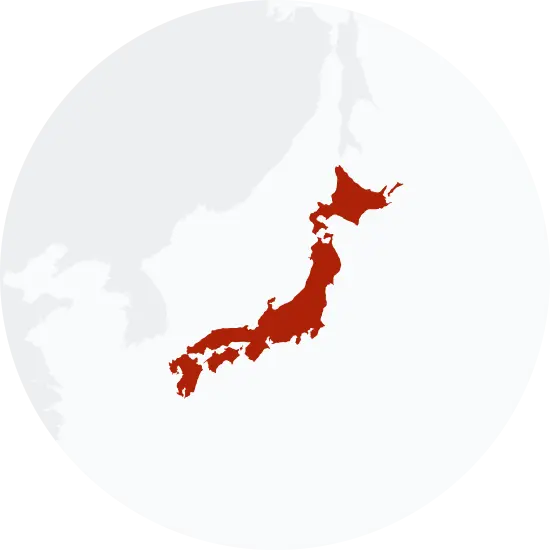Explore the Family Name Sato
How common is the last name Sato in the United States?
Based on the Decennial U.S. Census data, the popularity of the surname Sato has seen slight changes between 2000 and 2010. In 2000, Sato ranked 4,726th in popularity, but by 2010, it had slipped to 4,956th, experiencing a decrease of roughly 5%. However, despite this slide in ranking, the actual count of individuals with the surname Sato increased slightly from 6,864 in 2000 to 7,095 in 2010, indicating an increase of about 3%.
| 2000 | 2010 | Change | |
|---|---|---|---|
| Rank | #4,726 | #4,956 | -4.87% |
| Count | 6,864 | 7,095 | 3.37% |
| Proportion per 100k | 2.54 | 2.41 | -5.12% |
Race and Ethnicity of people with the last name Sato
In terms of ethnicity, the Decennial U.S. Census data reveals shifts in the distribution of ethnic identities associated with the surname Sato from 2000 to 2010. The majority identity remained Asian/Pacific Islander, although its proportion dipped from 81.45% in 2000 to 73.54% in 2010. During this period, all other recorded ethnic identities saw an increase. The largest growth was observed in the Black community, which, while starting at a low base of 0.41% in 2000, rose to 1.07% in 2010 – a significant increase of approximately 161%. The Two or more races category also experienced considerable growth (nearly 40%), as did the Hispanic (46%) and White (35%) communities. The American Indian and Alaskan Native representation also grew from 0.09% to 0.14%, marking a 55% increase.
| 2000 | 2010 | Change | |
|---|---|---|---|
| Asian/Pacific Islander | 81.45% | 73.54% | -9.71% |
| White | 6.75% | 9.12% | 35.11% |
| Two or More Races | 6.28% | 8.77% | 39.65% |
| Hispanic | 5.03% | 7.36% | 46.32% |
| Black | 0.41% | 1.07% | 160.98% |
| American Indian and Alaskan Native | 0.09% | 0.14% | 55.56% |
Sato ancestry composition
23andMe computes an ancestry breakdown for each customer. People may have ancestry from just one population or they may have ancestry from several populations. The most commonly-observed ancestry found in people with the surname Sato is Japanese, which comprises 71.0% of all ancestry found in people with the surname. The next two most common ancestries are British & Irish (6.8%) and French & German (4.8%). Additional ancestries include Chinese, Filipino & Austronesian, Spanish & Portuguese, Scandinavian, and Korean.
Ready to learn more about your ancestry? Get the most comprehensive ancestry breakdown on the market by taking our DNA test. Shop 23andMe
| ANCESTRY BREAKDOWN | COMPOSITION |
|---|---|
| Japanese | 71.0% |
| British & Irish | 6.8% |
| French & German | 4.8% |
| Other | 17.4% |

Possible origins of the surname Sato
Your DNA provides clues about where your recent ancestors may have lived. Having many distant relatives in the same location suggests that you may all share common ancestry there. Locations with many distant relatives can also be places where people have migrated recently, such as large cities. If a large number of individuals who share your surname have distant relatives in a specific area, it could indicate a connection between your surname and that location, stemming from either recent ancestral ties or migration.
Based on 23andMe data, people with last name Sato have recent ancestry locations in Japan and the United Kingdom of Great Britain and Northern Ireland.
| RECENT ANCESTRY Location | Percentage |
|---|---|
| Hiroshima Prefecture, Japan | 64.60% |
| Okinawa Prefecture, Japan | 62.10% |
| Tokyo, Japan | 53.80% |
| Kagoshima Prefecture, Japan | 24.60% |
| Kumamoto Prefecture, Japan | 24.10% |
What Sato haplogroups can tell you
Haplogroups are genetic population groups that share a common ancestor on either your paternal or maternal line. These paternal and maternal haplogroups shed light on your genetic ancestry and help tell the story of your family.
The top paternal haplogroup of people with the surname Sato is O-F1204, which is predominantly found among people with East Asian & Indigenous American ancestry. Haplogroup O-F1204 is descended from haplogroup O-M1359. Other common haplogroups include D-Z1504 and D-M55, which are predominantly found among people with East Asian & Indigenous American and East Asian & Indigenous American ancestry. Other surnames with similar common haplogroups are: Suzuki, Takahashi, Tanaka, Yamada, Yoshida, Nakamura, Yamamoto, Watanabe, Matsumoto, Niven.
The most common maternal haplogroups of people with Sato surname are: H, M7a1a, D4b2b. These most commonly trace back to individuals of East Asian & Indigenous American and European ancestry.
 Paternal Haplogroup Origins O-M1359
Paternal Haplogroup Origins O-M1359
Your paternal lineage may be linked to the Yayoi
Haplogroup O1b2a, a branch of haplogroup O, is closely related to several haplogroups that are commonly found in Japan. Haplogroup O is closely associated with Kyushu, Japan's third largest island, and makes up over half of all men in Japan. Although haplogroup O is prevalent in Japan, it likely only entered Japan during the Yayoi expansion about 2,300 years ago. During the Yayoi expansion, people entering from the Korean Peninsula brought wet rice agriculture, weaving technology, and metalworking technology to Japan. The Yayoi expansion began on the island of Kyushu, where haplogroup O is very common today. It is possible that some of the early members of O1-F3356 were involved in this major shift, which quickly and dramatically altered Japanese culture.
Your maternal lineage may be linked to the ancient people of the Indian subcontinent
While Haplogroup M is widespread throughout South and East Asia, it is more diverse on the Indian sub-continent than anywhere else in the world. The high degree of diversity of M in India is likely tied to its ancient arrival here nearly 50,000 years ago. In addition to M2, which is found throughout the subcontinent, there are dozens of haplogroups branching off of M that exist in India. These branches are often connected to specific regions, tribes, or ethnic groups. For example, haplogroup M18 is found among the Oraon peoples of eastern India and Bangladesh, while haplogroup M41 is common among the Pardhan speakers of eastern India, and haplogroup M31a can be found on the Andaman Islands, just off the southeast coast of India.

What do people with the surname Sato have in common?
Spoiler alert: it's complicated. People with the same last name are usually no more genetically similar than a randomly sampled group of people from the same population. That said, people with the same surname are more likely to have similar ancestries than randomly sampled individuals. The reason is the tendency of people with similar cultural or geographical backgrounds to preferentially mate with one another. That's why people who share a surname may be more likely to share traits and tendencies in common than people within the general population. Check out the percentages below to see the prevalences of tastes, habits, and traits of people with your surname compared with prevalences among 23andMe users.
Preferences
Traits
Habits
Wellness
Are health conditions linked to the last name Sato?
The short answer is that, if there is an association between surname and health, it's usually more about your ancestry than your name. Individuals with a given surname are no more genetically similar than the general population but often have similar ancestries. The populations of people associated with those shared ancestries often have sets of genetic variations, also known as alleles, in common. Some of those alleles are associated with a greater likelihood of developing certain diseases.
Disease variant frequency by ancestry
Disease allele frequencies in populations associated with the surname Sato are shown below. Important Note: not everyone with a disease allele will develop these health condition






















